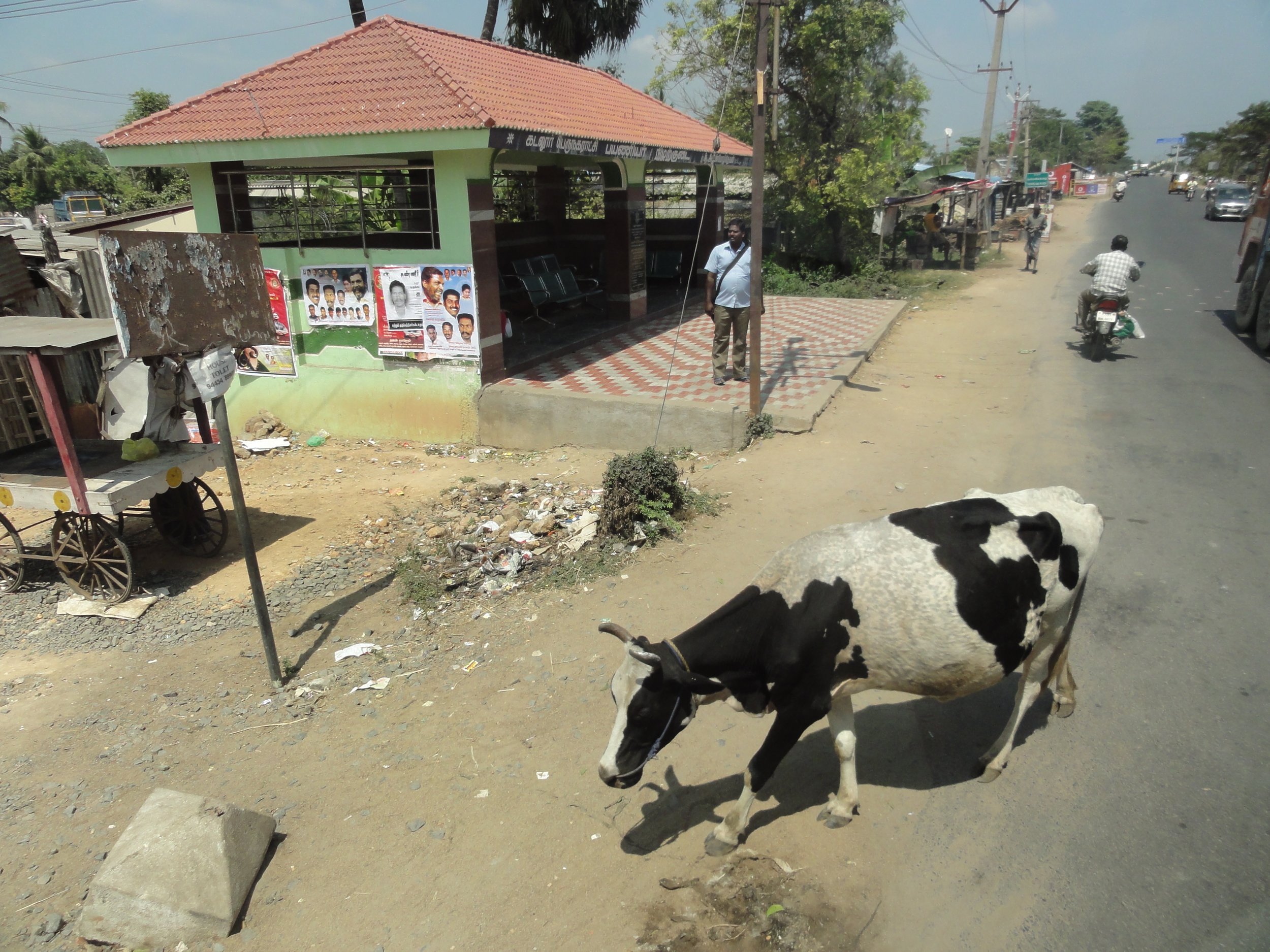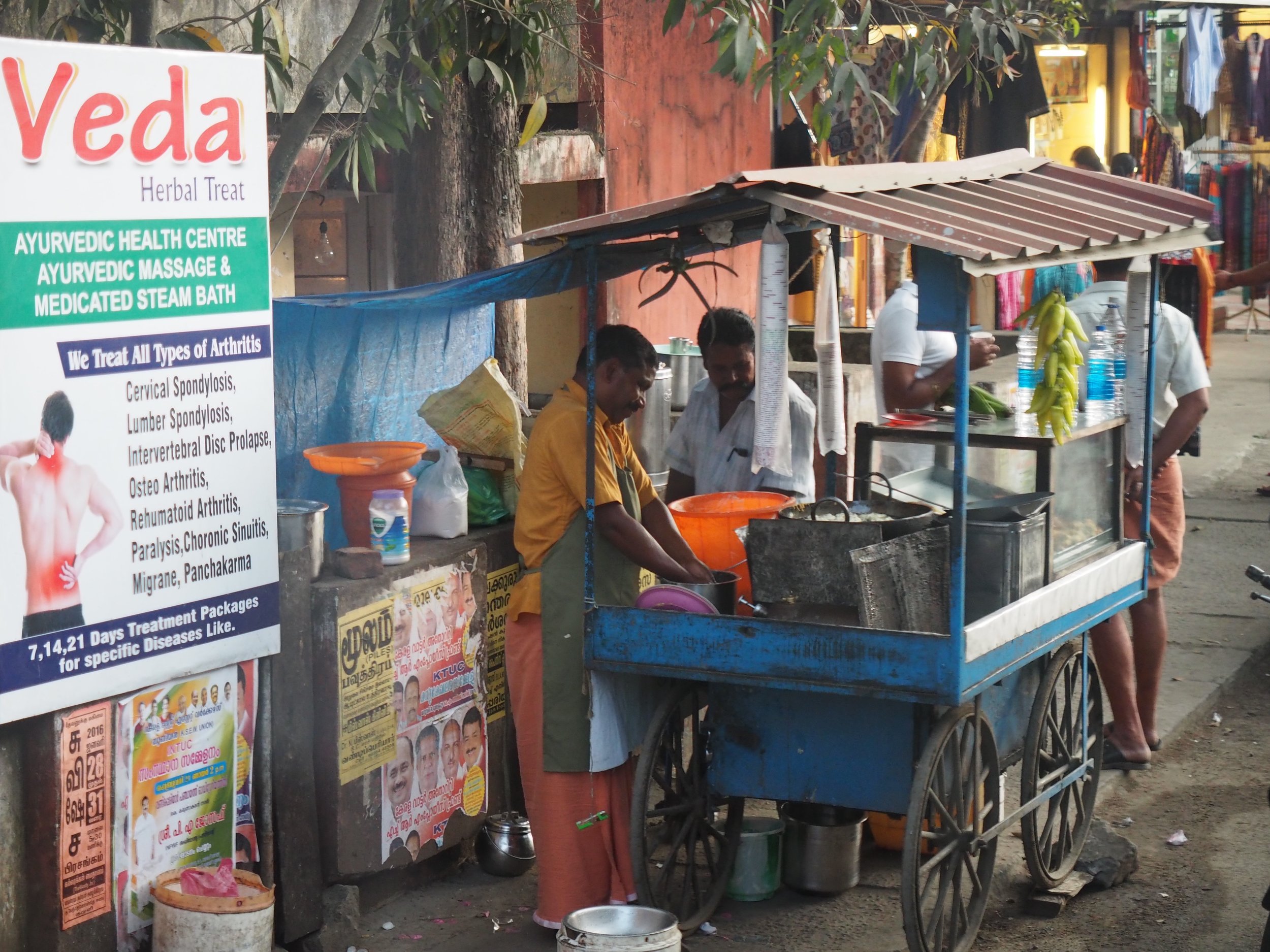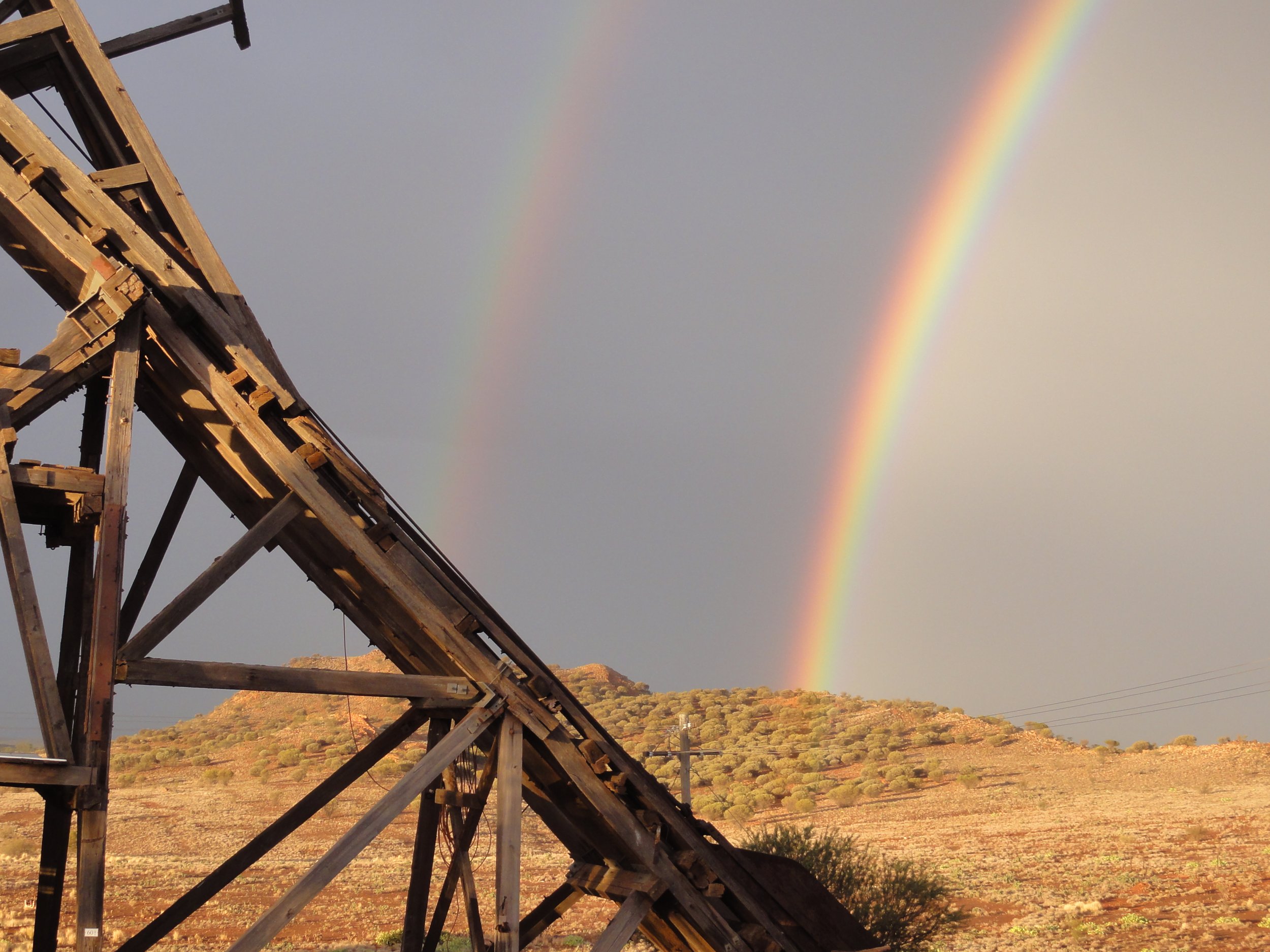What may seem chaotic and unnavigable to us is just a typical daily process in India.
It’s late at night when Mr Fritz and I arrive in Kochi, the capital of Kerala in southern India. We're a bit weary after the long flight but filled with anticipation of what was to come. It took ages to exit the airport. I learn quickly that when you travel with a group you have to be extra patient. Once outside I feel the thick steamy air on my skin and with bags in tow and jasmine-flower leis around our necks, we head toward the bus.
As I board the well-worn bus with ugly cobalt blue curtains and buzzing mosquitoes, I think, ‘Good Lord, I hope this isn’t the ‘luxury’ coach they promised.’ Luckily it was just the transfer bus to the overnight hotel.
The next morning we embark on a sixteen-day, yep, a sixteen-day bus tour from the west coast to the northeast coast of southern India. I joined this bus journey somewhat reluctantly for several reasons. I'm not entirely thrilled about travelling in a group and I've also had some very unpleasant bus trips in the past. Some were downright dreadful, quite nightmarish actually! Like that time we were speeding up the Hume highway to Sydney on a stormy night, or when I travelled across the US on a Greyhound bus for three days and three nights. There was also a near head-on collision in a hairpin bend on the way to Samaria Gorge in Crete.
Looking down from the bus - this cow made it safely across the road in front of a truck and a scooter.
This time, however, the journey is significantly longer and the challenges more persistent. Thankfully, our ‘luxury’ coach is a step up from the night before, but it doesn’t have a toilet on board which straight away makes me feel a bit nervous. And stops are infrequently scheduled, this is mostly because the public toilet concept hasn't quite caught on yet, so we have to hold on. This means we have to forego that the second cup of delicious masala chai served at breakfast, and the refreshing watermelon juice - it’s simply too risky.
Being stuck in a seat for hours at a time means all sorts of sitting-related issues begin to arise. My body starts to complain and my feet swell, which forces me to leave my bejeweled sandals in my suitcase for the remainder of the trip. And although I’m grateful for the air conditioner, it does turn into quite an irritation. To escape the icy-cold air blasting on top of my head I either have to perch on the edge of my seat, slump back in the ergonomically deficient seat and endure a throbbing coccyx, or wrap a towel around my head turban-style.
To distract myself I stare out the window. It’s an extraordinary sight most of the way. I see the locals selling coconuts, marsala chai, bananas and fried savoury doughnuts.
Food vendors provide an important service, they supply daily snack to locals.
There is constant colour and movement everywhere; brilliant Saris, exotic flora, intricately painted shrines and plenty of kitsch and household items for sale by the roadside. Barren land, vast litter, skinny cows and clogged waterways are also part of the landscape. And the organised chaos at intersections endlessly fascinates me too.
I frequently glance around the bus out of curiosity, mostly to see what the others are up to, but also to carry out a twisting action, which is now part of my new seated-exercise routine. And much to my surprise and envy, I find many of my fellow travellers are asleep. How the hell is this possible? Potholes and speed humps coupled with the grinding and clapping of the engine and the hissing of the constantly in-use breaks is hardly conducive to a nap!
But it’s the intriguing and very noisy Indian car-horn Morse code that prevents me from sleeping the most - it’s simply the way the drivers communicate here.
This fascinating system might go unnoticed with just a few vehicles, but not in a never-ending jumble of trucks, buses, cars, tuk-tuks, scooters, bicycles, cattle-drawn carts, pedestrians, cows and even the occasional troop of monkeys. It’s loud and incessant and there never seems to be a pause in the Indian car horn Morse code.
Indian ladies add a lot of colour to street scenes with their saris.
A hard days work in the field. I was the lucky one just driving by wondering what these men get paid and where they live.
After being on the road for several days and having perfected my onboard exercises, much to my excitement I discover a new activity. I like to think of it as extreme photography - taking photos from a moving bus. It’s super challenging and thrilling and it makes the time go by a lot quicker. (All the images in this story were taken from the bus)
While I edit my photos onboard I start to notice that most of my bus snaps actually highlight the great social divide in which we live and I begin to detect a subtle shift in my attitude, in my focus and even in my behaviour. My ‘uncomfortable’ first-world problems of sitting in an air-conditioned bus and touring around India, feasting on glorious food, staying in boutique accommodation, and visiting ancient sites, suddenly seems shameful.
I morph into self-reflection mode. I realise I’m now presented with an opportunity for personal growth. I can either keep bitching to myself about all the little things that irritate me or I can be appreciative of this new experience and my position in this world. This is in fact, that curious, grounding gift that travel can bestow upon you. You remove yourself from your comfort zone, you experience discomfort, regret, irritation, and somehow you end up feeling grateful for it.
With time I knew my swollen feet would recover, my coccyx would stop throbbing, and the violent gastro both of us contracted on the second last day would ease up, but I also knew that my time on the bus, and those fleeting images I captured, represents a shift in me - one that may not have happened without that ‘painful’ bus trip.
Off to work in the back of an old truck. This, of course, would be illegal in Australia - deemed unsafe! But in India, it's just how they roll.








